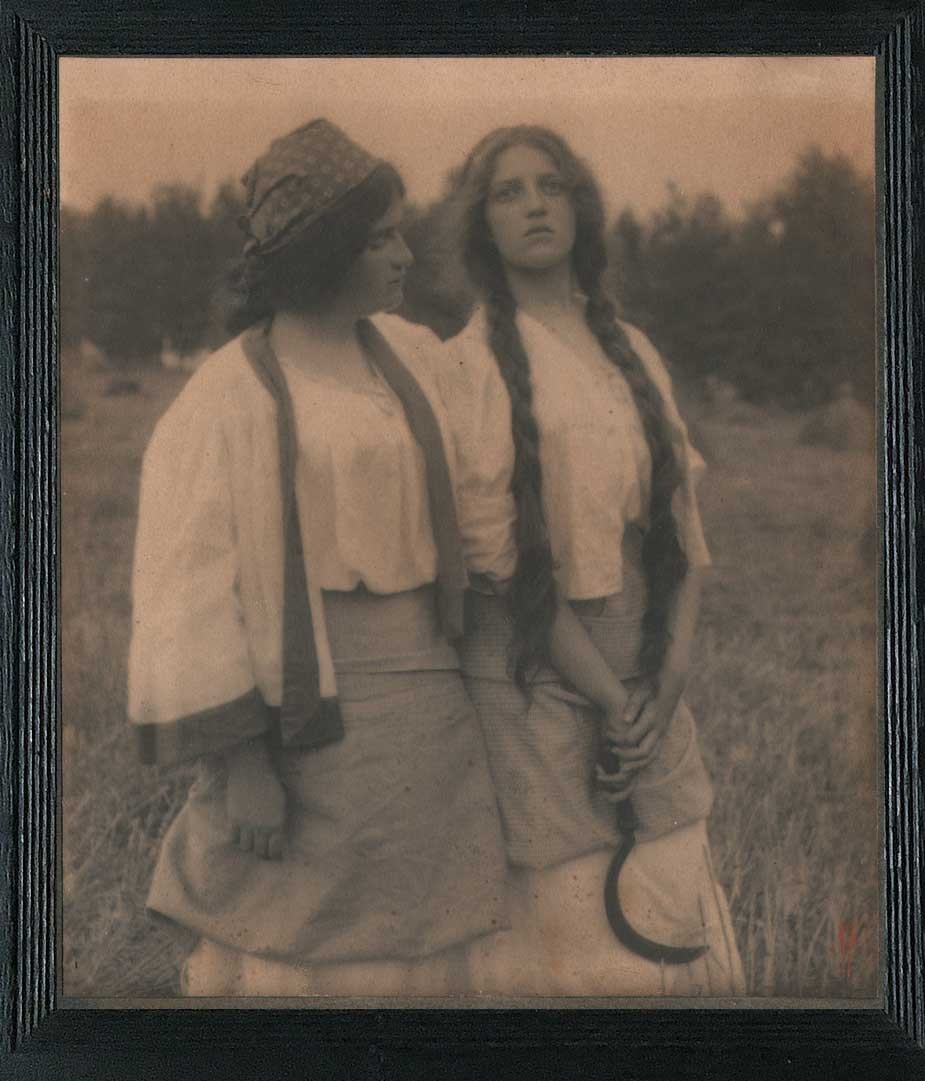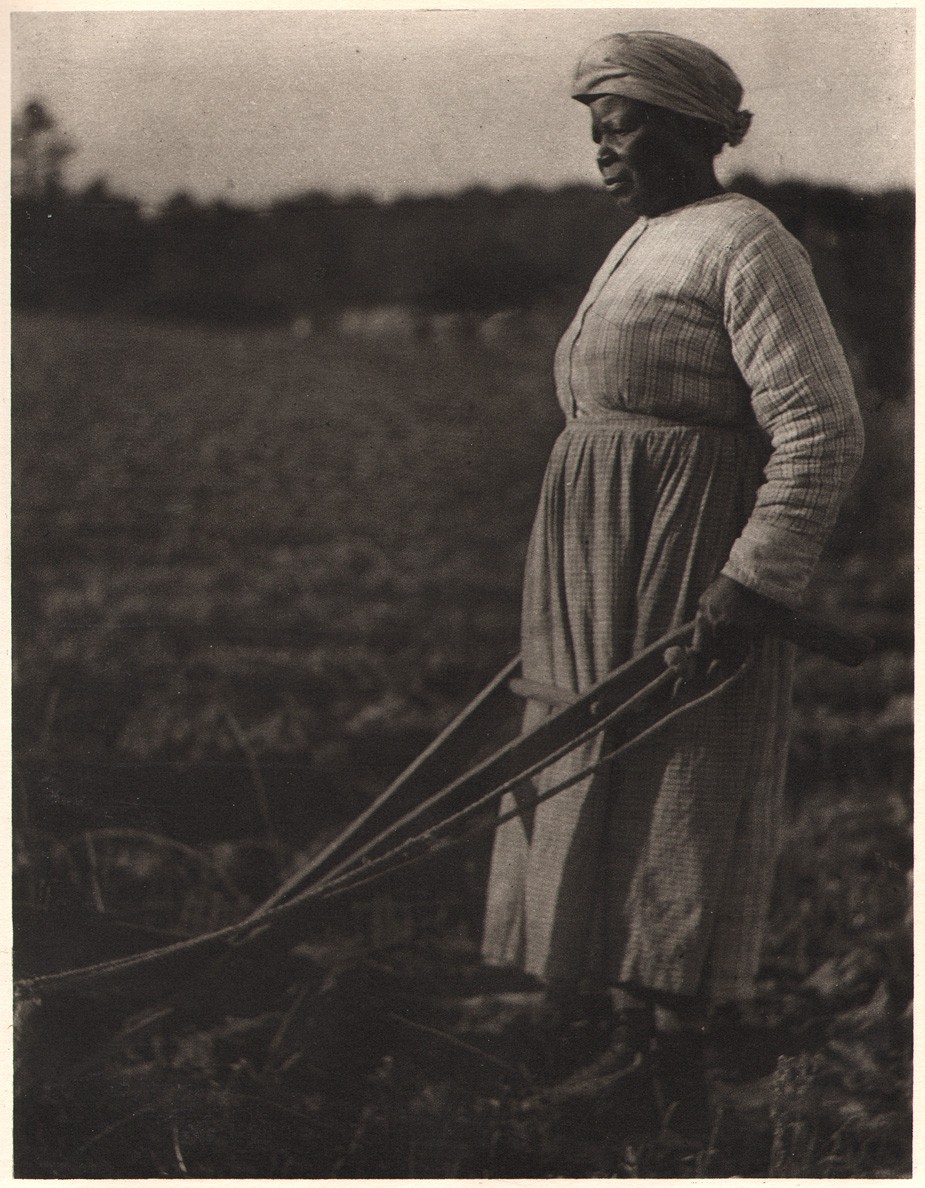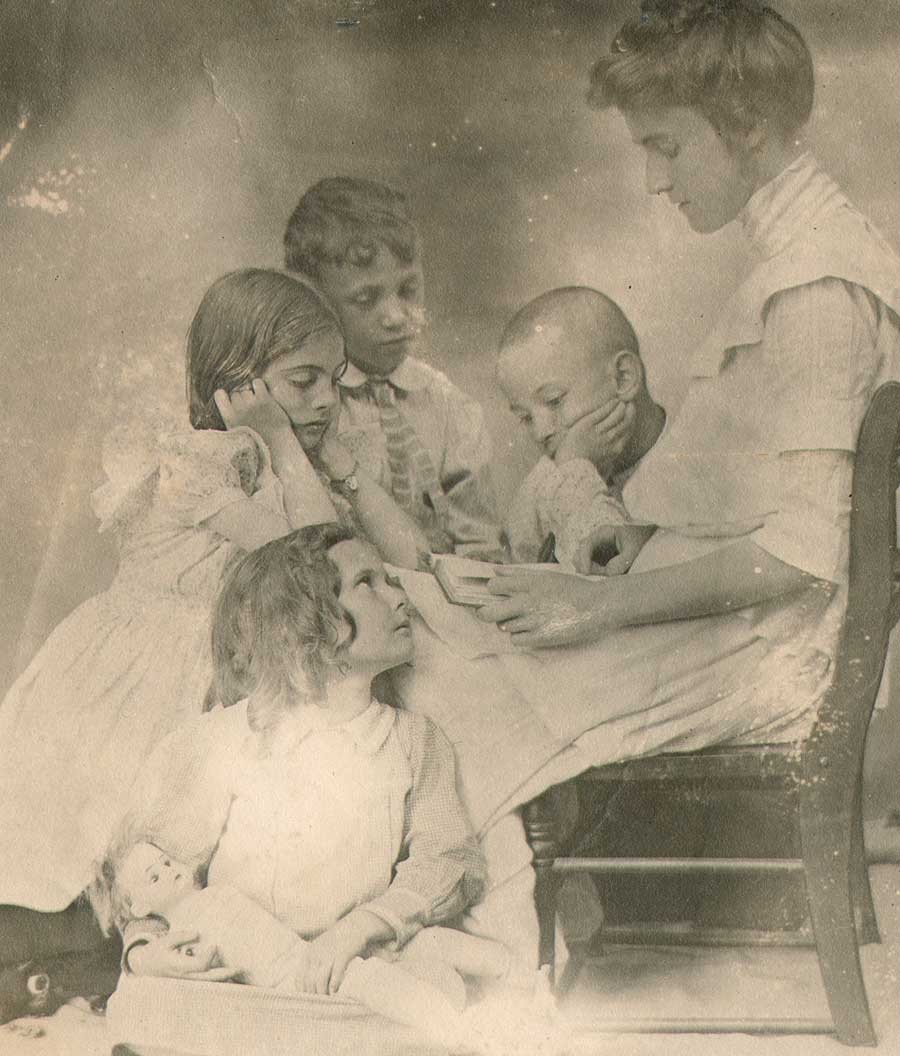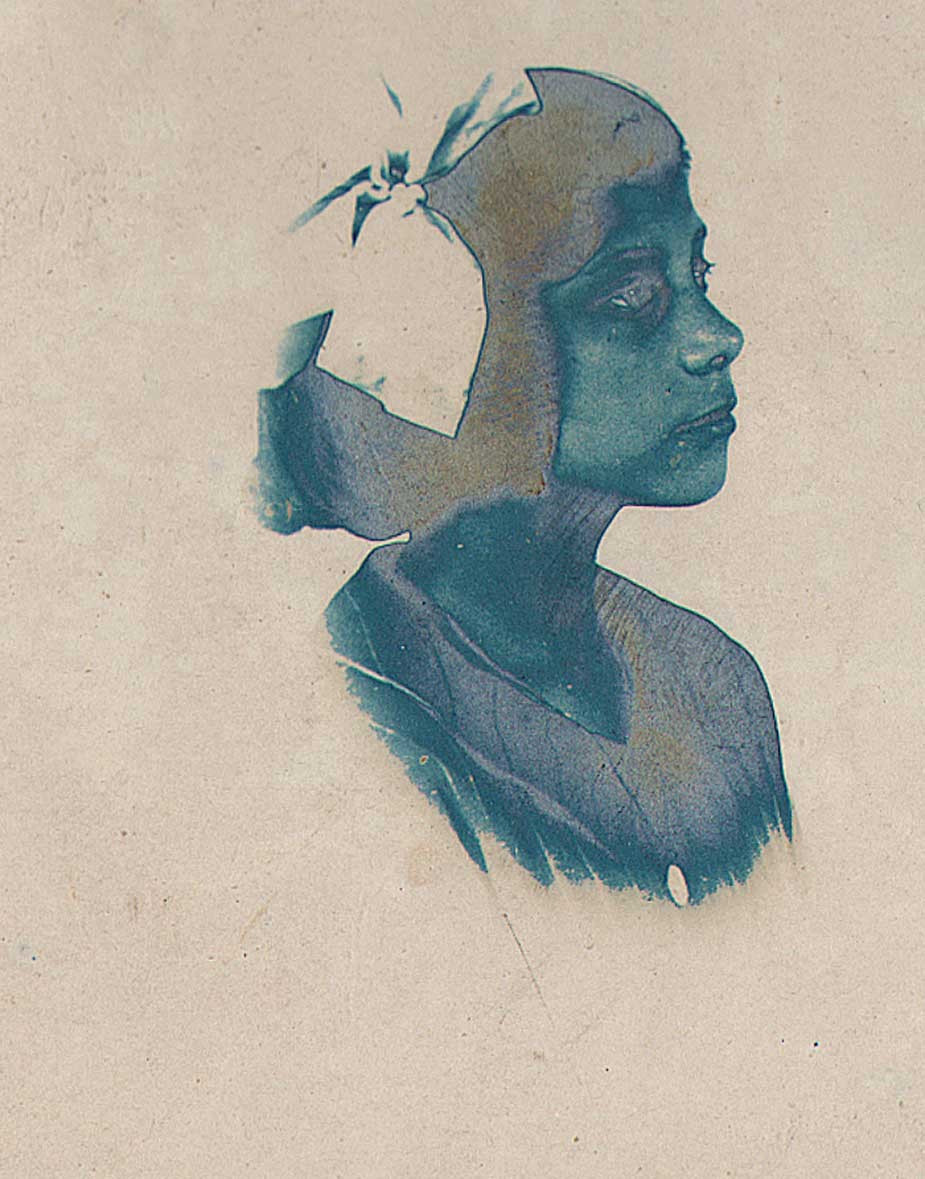The historical photographic record doesn’t flinch when it comes to the importance of women, and I present herewith a short gallery as evidence, many of these photographs taken by women themselves. Mother Earth was surely proud of those millions who turned out in rallies all over the United States and across the World in support of the fairer sex on Saturday. And in Washington, D.C., it was a pointed, diverse, and joyous message presenting the true story of America heard loud and clear countering the utterances of the keynote speaker the day before.

A Message to Washington: “Sweet-faced Little Mother” : Detail: Anonymous American Photographer: 1911: Cyanotype postcard mailed to Washington D.C. from Sweetwater Texas showing a proud Mexican family in front of their Texas & Pacific Railroad section house. 7.4 x 9.9 cm | 8.7 x 13.9 cm: Besides being built with the hard labor of Mexican and other nationalities in the later 19th Century, continued maintenance of American railroads like the “T & P” in places like Texas in the early 20th was often performed by them, with the rail line providing section houses along the track for temporary quarters to live in. Writing to a Mrs. Burnside on the card’s verso, the following appears in neat script: “This man came up and asked me to come and take a picture of his baby, “just borned”-When I got there, the whole family wanted to be taken-so here they are the sweet-faced little mother and the baby, not quite 2 weeks old. They are such a happy-hearted class of people.” From: PhotoSeed Archive

“The Song of the Meadow Lark”: Mathilde Weil: American: (1872-1942) ca. 1900: Platinum print mounted on board signed in red with Weil cipher at lower right: 18.4 x 16.0 cm | 19.1 x 16.5 cm: black-painted wood frame: 28.4 x 25.7 cm: In December, 1899, critic Francis J. Ziegler, writing in Brush and Pencil for a review of the Philadelphia Photographic Salon, said of this photograph: “Among Philadelphia’s artist photographers one of the most prominent is Miss Mathilde Weil, and her contributions to this exhibition are full of artistic excellence. Her “Song of the Meadow-Lark” has a suggestion of the Orient about it, notwithstanding the fact that the landscape is an American field and the two girls who have stopped in their reaping have American faces. This effect, I think, is due to the long braids of hair which hang down the front of one damsel’s bodice, and the white jacket worn by her companion, the trimming of which repeats the same lines in artistic harmony.” (p. 113) From: PhotoSeed Archive

“Woman Behind Plow”: Doris Ulmann, American: (1882-1934): 1933: hand-pulled photogravure: Plate 39 from the deluxe volume Roll Jordan Roll: New York: Robert O. Ballou: (text by Julia Peterkin) 21.2 x 16.3 | 28.4 x 20.5 cm: A landmark photographic volume of the 20th Century featuring ethnographic studies and portraits, this volume features 90 full-page copperplate gravures done in the Pictorial manner. Writing for the Amon Carter Museum of American Art in Texas, author Steve Watson describes the volume in part: “The book focuses on the lives of former slaves and their descendants on a plantation in the Gullah coastal region of South Carolina. Peterkin, who won the Pulitzer Prize for her novel Scarlet Sister Mary (Indianapolis: Bobbs-Merrill, 1928), was born in South Carolina and raised by a black nursemaid who taught her the Gullah dialect. She married the heir to Lang Syne, a 2,000-acre cotton plantation, which became the setting for Roll, Jordan, Roll. Ulmann began photographing there in 1929.” From: PhotoSeed Archive

“Photograph-New York”: Paul Strand, American: (1890-1976): 1917: hand-pulled photogravure from Camera Work XLIX/L: 22.4 x 16.6 | 29.7 x 20.6 cm: This iconic portrait of a blind woman, who has been issued a peddler’s license by the city seen above her sign, was taken by Strand with the aid of either a false or prism lens as part of a series of ground-breaking modernist photographs done on the streets of New York City in the Fall of 1916. Writing the same year this portrait appeared in Camera Work, in August, 1917, an essay on Photography for the journal The Seven Arts concludes with the following observations by Strand-observations that could also certainly apply to the joyful diversity of human beings themselves, as in this case- womankind herself: “The existence of a medium, after all, is its absolute justification, if as so many seem to think, it needs one, and all comparison of potentialities is useless and irrelevant. Whether a water-color is inferior to an oil, or whether a drawing, an etching, or a photograph is not as important as either, is inconsequent. To have to despise something else is a sign of impotence. Let us rather accept joyously and with gratitude everything through which the spirit of man seeks to an ever fuller and more intense self-realization.” (pp. 525-26) From: PhotoSeed Archive

Detail: “Untitled Study of Woman Reading to Children: Juliana Royster, American: ( 1876-1962) ca. 1905-10: Gelatino-Choloride (POP) print: 11.8 x 10.0 cm: An artist who excelled in multiple mediums, Juliana Royster, from Raleigh, North Carolina, learned photography while attending Saint Mary’s School there, and is best known in the modern era for her founding in 1917, along with husband Jacques (born James) Busbee, (1870-1947) the Jugtown Pottery in Seagrove, North Carolina. From: PhotoSeed Archive

Detail: “Woman with Scrub brush Looking out Window”: Doris Ulmann, American: (1882-1934): 1933: hand-pulled photogravure: Plate 66 from the deluxe volume Roll Jordan Roll: New York: Robert O. Ballou: (text by Julia Peterkin) 21.0 x 16.3 | 28.4 x 20.5 cm: A landmark photographic volume of the 20th Century featuring ethnographic studies and portraits, this volume features 90 full-page copperplate gravures done in the Pictorial manner. Writing for the Amon Carter Museum of American Art in Texas, author Steve Watson describes the volume in part: “The book focuses on the lives of former slaves and their descendants on a plantation in the Gullah coastal region of South Carolina. Peterkin, who won the Pulitzer Prize for her novel Scarlet Sister Mary (Indianapolis: Bobbs-Merrill, 1928), was born in South Carolina and raised by a black nursemaid who taught her the Gullah dialect. She married the heir to Lang Syne, a 2,000-acre cotton plantation, which became the setting for Roll, Jordan, Roll. Ulmann began photographing there in 1929.” From: PhotoSeed Archive

“A Moments Leisure”: Ben J. Boyd: American, ( 1881-1958): ca. 1915-20: Gelatin Silver print, mounted: 24.0 x 14.4 | 26.3 x 15.4 | 34.2 x 26.6 cm: Silhouetted in a doorway, a woman takes a break from hanging laundry seen at center in this unusual home-life study depicting the everyday struggle of women done here by long-time Wilkes-Barre, PA resident and Camera Club member Benjamin Joslin Boyd. From: PhotoSeed Archive

“Female Head Study”: unknown, probably American photographer: ca. 1900-20: Reverse negative, Gelatin-silver over Cyanotype photograph, unmounted: 8.7 x 6.2 cm: Whether intentional or not, and for the purposes of this post, this alternative, multi-process study of a young woman is symbolic for a joyous, multi-ethnic celebration of women’s diversity everywhere. From: PhotoSeed Archive



